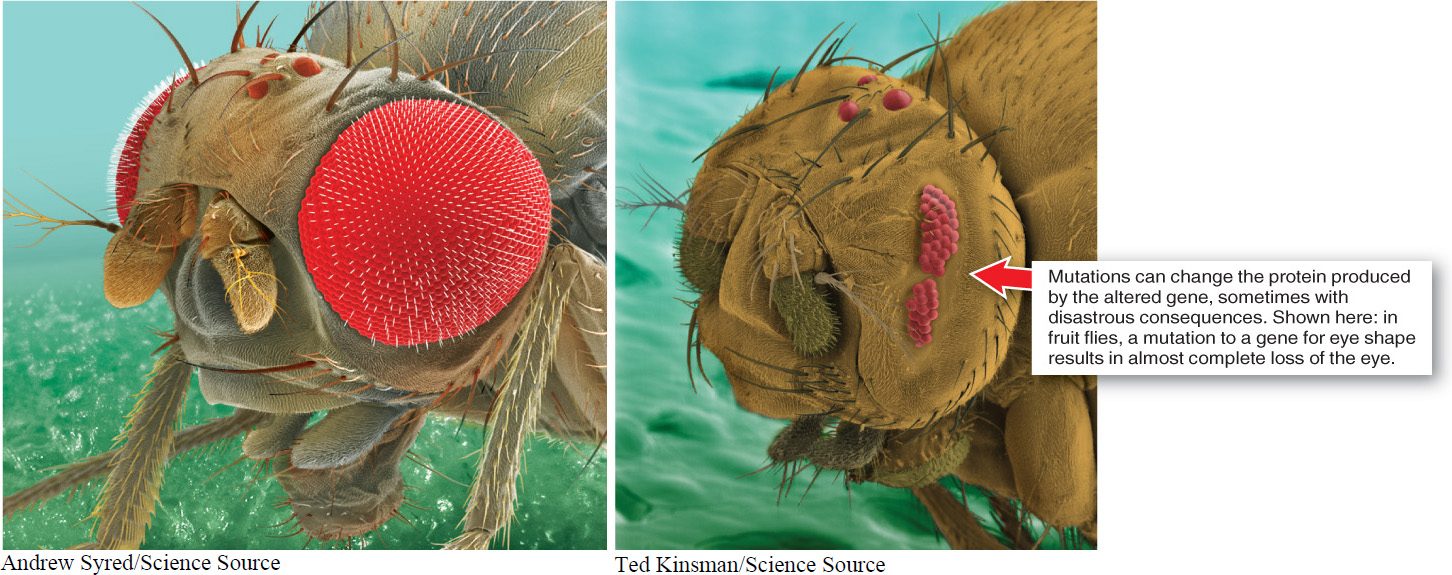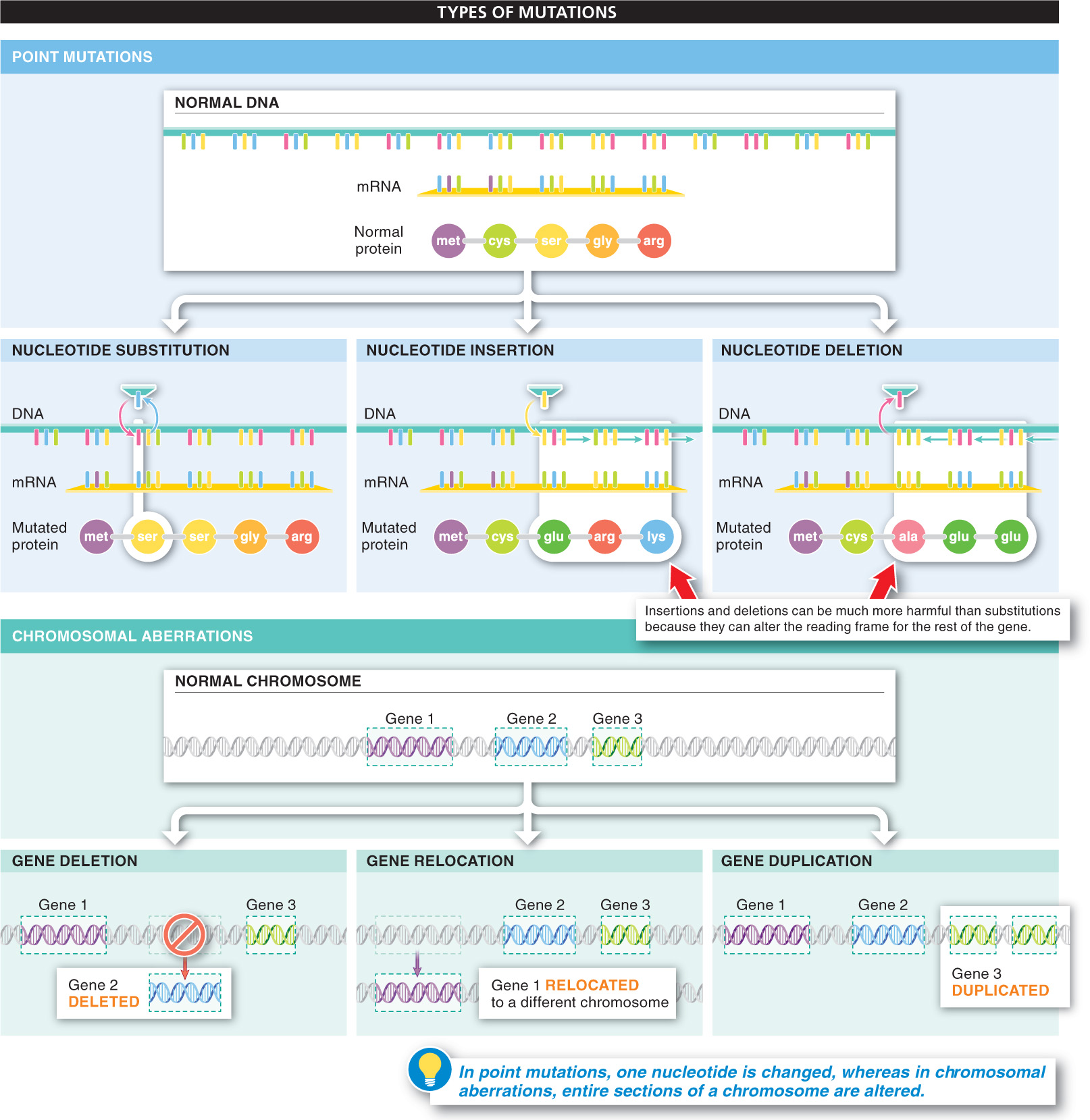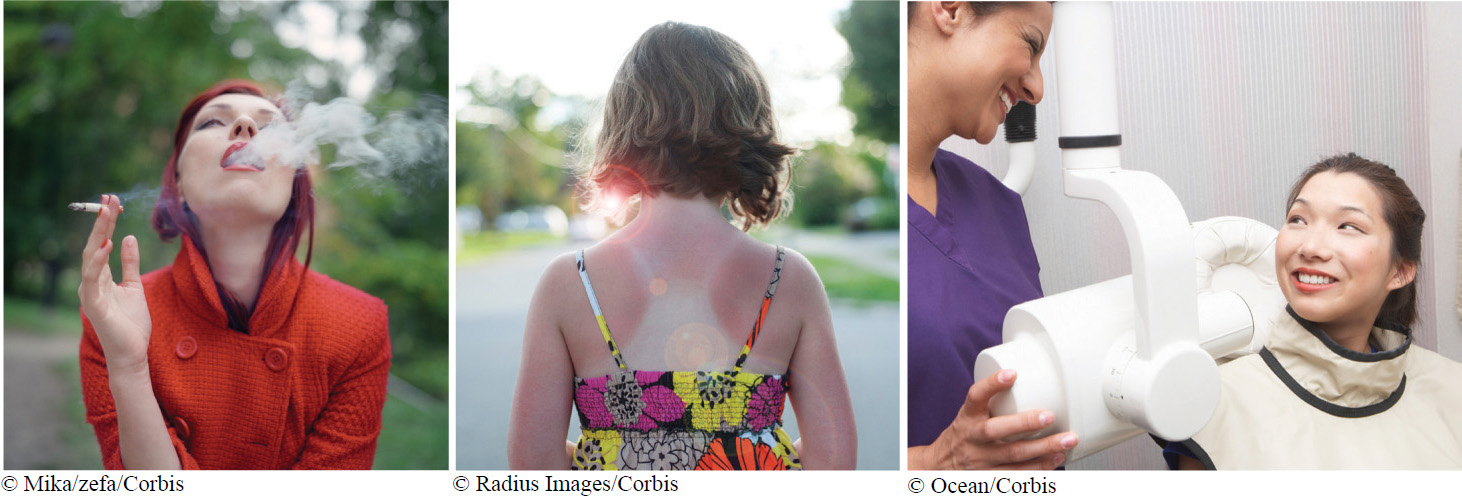
Through the two-
As an example of how mutations can affect organisms, consider the case of breast cancer in humans. When two human genes, called BRCA1 and BRCA2, are functioning properly, they help to prevent breast cancer by helping to repair DNA damage, preventing cells from accumulating the changes that lead to cancer. If the DNA sequence of either of these genes is altered through mutation and the gene’s normal function is lost, the person carrying the gene has a significantly increased risk of developing breast cancer. (Because a variety of other factors, including environmental variables, are involved in development of cancer, it’s impossible to know for certain whether these individuals will develop breast cancer.) Currently, more than 200 different mutations in the DNA sequences of these genes have been detected, each of which results in an increased risk of developing breast cancer.
Given the havoc they can cause for an organism, it’s not surprising that mutations have a bad reputation. After all, because they can change the protein produced, they can disrupt normal processes and harm the individual (FIGURE 5-20). But there are a couple of reasons why mutations’ bad reputation may not be fully deserved. First, it turns out that many—

A second reason that mutations’ bad reputation may be undeserved is the paradoxical fact that mutations are essential to evolution. Those mutations that don’t kill an organism, or reduce its ability to survive and reproduce, can be beneficial. Every genetic feature in every organism was, initially, the result of a mutation. (In Chapter 8, we explore the relationship between mutation and evolution.) Ultimately, most mutations you inherit from your parents will have no effect. And all of you are carrying mutations that you will never know about!
It’s important to note that mutations can occur in an organism’s gamete-
198
Mutations in the sex cells (gametes), on the other hand, do not have any adverse health effects on the person carrying them, but these mutations can be passed on to offspring. Individuals inheriting certain mutations from a parent—
In terms of how they physically affect DNA, mutations generally fall into two types: point mutations and chromosomal aberrations (FIGURE 5-21). In point mutations, one base pair is changed. In chromosomal aberrations, entire sections of a chromosome are altered.

Point mutations occur when one base pair in the DNA is substituted for another, or when a base pair is inserted or deleted. Insertions and deletions can be much more harmful than substitutions, because the amino acid sequence of a protein is affected. If a single base is added or removed, the three-
Chromosomal aberrations are changes to the overall organization of the genes on a chromosome. Chromosomal aberrations are like the manipulation of large chunks of text when you are editing a term paper. The aberrations can involve the complete deletion of an entire section of DNA, the relocation of a gene from one part of a chromosome to elsewhere on the same chromosome or even to a different chromosome, or the duplication of a gene, with the new copy inserted elsewhere on the chromosome or on a different chromosome. Whatever the type of aberration, a gene’s expression—
Given the potentially hazardous health consequences of mutations, it is advisable to minimize their occurrence. Can this be done? Yes and no. There are three chief causes of mutation and, although one of them is beyond our control, the risk of occurrence of the other two can be significantly reduced (FIGURE 5-22).

1. Spontaneous mutations. Some mutations arise by accident as long strands of DNA are duplicating themselves—
Why do dentists put a heavy apron over you when they X-
2. Radiation-
199
Why is it dangerous to be near the core of a nuclear power plant?
Another source of dangerous radiation is found in the core of nuclear power plants, where radioactive atoms are used and produced in energy-
200
3. Chemical-
In Section 5.11, we examine how even tiny changes in the sequence of bases in DNA can lead to errors in protein production and profound health problems.
TAKE-HOME MESSAGE 5.9
Mutations are alterations in a single base or changes in large segments of DNA that include several genes or more. They are rare, but when they do occur, they may disrupt normal functioning of the body (although many mutations are neutral). Extremely rarely, mutations may have a beneficial effect. Mutations play an important role in evolution.
What are the two general types of mutations?
Point mutations occur when one base pair in the DNA is changed. Chromosomal aberrations occur when changes to the overall organization of the genes on a chromosome arise.